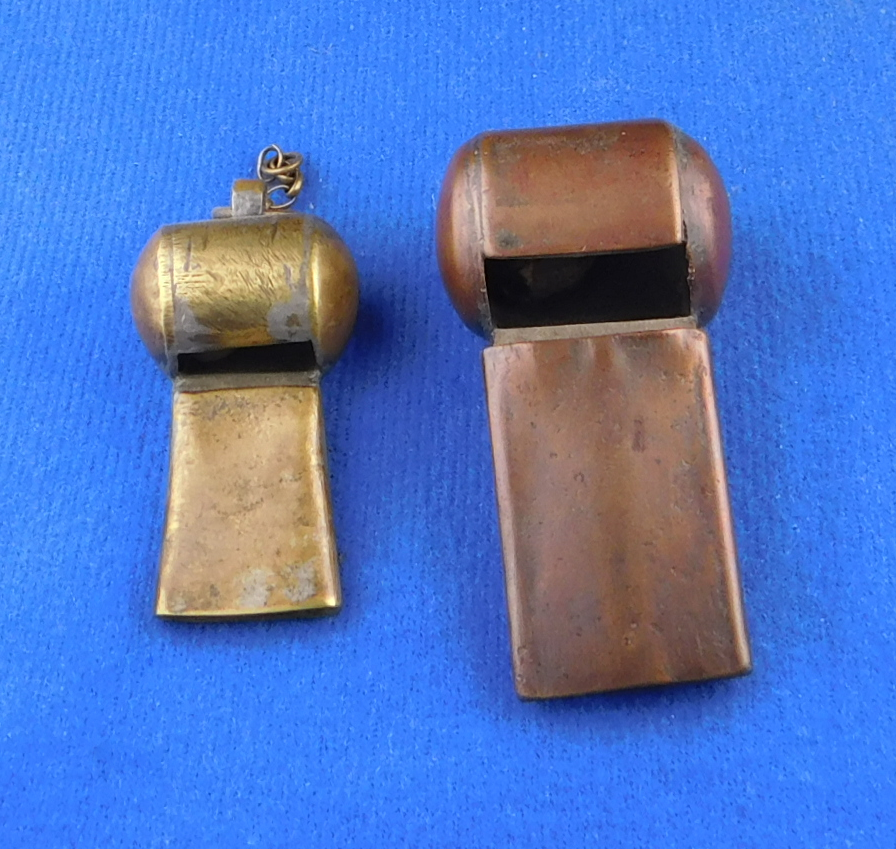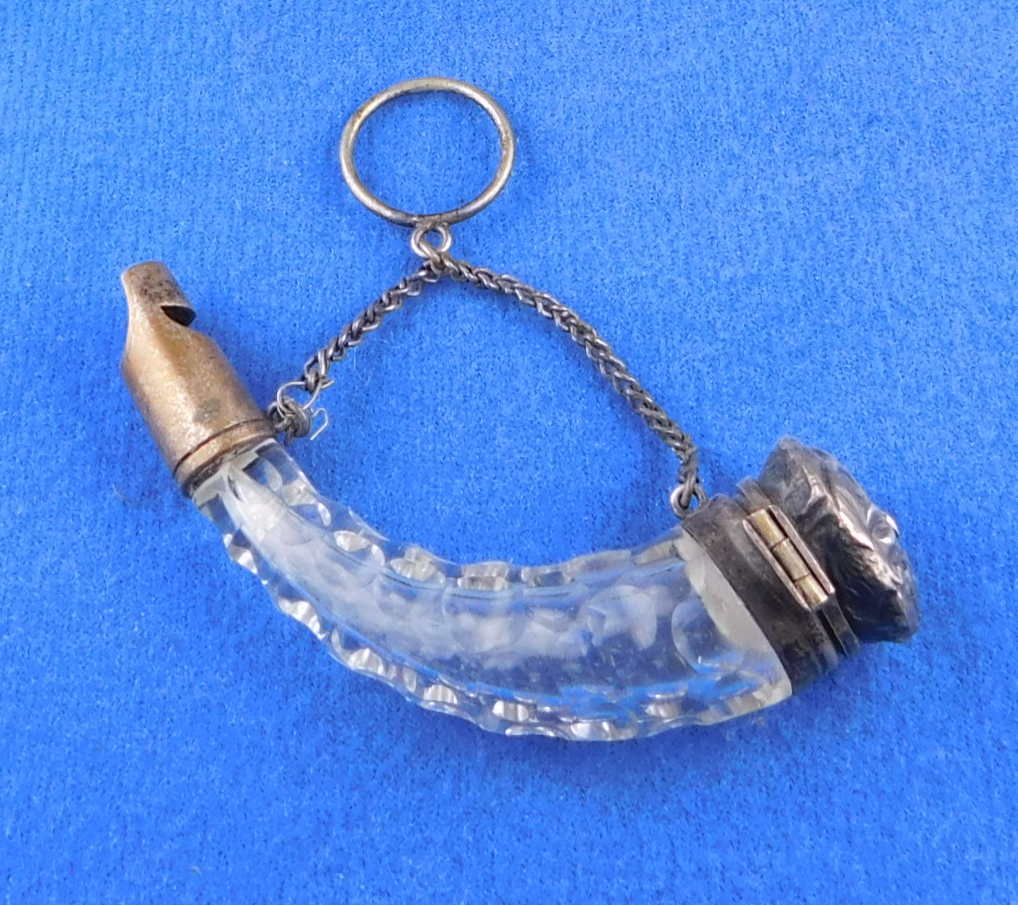Spotlight > Whistle Categories > Boatswain-Bosun > 117
Whistory
Websters definitions states:
Boatswain – ‘a petty officer on a merchant ship having charge of hull maintenance and related work
First Known Use of boatswain before the 12th century.
Middle English bootswein, from boot boat + swein boy, servant’
Bosun – short for boatswain
Boatswain ‘pipes’ have been in use for centuries ( 1300s ? ) specially used aboard merchant ships and naval military vessels. Ironically, they have received little attention among whistle collectors. The book used by many collectors titled More Whistles by Martyn Gilchrist, does not even feature them or mention bosuns in the entire publication (none shown in the cover picture). Dundas only shows one towards the back of the book, Collecting Whistles on page 133. Of course, none are inserted in Collecting Police Whistles and just three pages include a few in the booklet Whistles by Gilchrist.
However, if one travels back further in publications, they will see that Whistle Notes C.1998 used a bosun for its logo and featured two articles. Especially well written is the article in issue #4 with a three-page overview. One wonders why so little attention since and presently? On auction when they surface ornate dated bosuns in good condition can garner high prices from nautical collectors, but perhaps whistle collectors shy away, being typically impecunious, that is to say, comparably.
Nevertheless, these are whistles and arguably may be the largest subgroup of whistles. Why might this be stated? There are four main components – keel, gun, mouthpiece, and buoy which parts can be formed with tremendous variability. Furthermore, the ‘decorations’ add another level of design and there for increasing the number of whistles in this subgroup.
Additionally, the hallmarked silver whistles give us specific years and makers, the fodder of most whistle collectors.
This article will introduce the variability of bosun whistles. From observing hundreds of bosun whistles it can be seen that Great Britain lead the charge from perhaps 6 -7 centuries ago, really coming into their own circa 1800. France follows with circa 1850 and both China and America circa 1900. Earlier examples are known and documented, but these are pivotal benchmark dates in order to press forward in discussion. Additionally, other whistles may have been used prior to bosun designs, however we will be focusing on the bosun pipe design.
Interestingly, a country of course needed to have ‘shipping vessels’ that were somewhat seaworthy ( full rigged ships ) to need these pipes or bosun whistles. So, until a country entered this arena, they still might have made whistles for sale to other countries ( i.e seamen ), while not using them personally, such as early Chinese bosuns made for Great Britain and American traders. Although Portuguese, Spanish, and Dutch vessels sailed as early as French and British ships, little has been seen, dated and documented for their bosun whistles.
Timelines are generalized in this article so as to examine bosuns from the late 1700s to present rather than try to document the earliest examples and the earliest origins. This parallels the extension of global shipping routes, the extent and nature of the world’s oceans and the eventual demise of sailing vessels going forward with powered steam vessels. At the same time, naval military ships grew into their own, standardizing and specifying bosun whistle designs. As interesting it is to see a dragon covered Chinese bosun, it would not have been a naval issue for use or allowed to be used in the course of a boatswains duties.
It must be mentioned that it was typical for a boatswain to ‘dent’ the buoy, called tuning to a specific sound idiosyncratic with that person’s duties. Presentation and special gift whistles would be owned undented, since some whistles were unique enough that they would be unacceptable for military standard use but still be desired or presented. Additionally, the metals used could correspond to rank. Lastly silver was used in preference because of its antibacterial properties.
Whistology
Components left to right clockwise, include the mouthpiece, gun, buoy, keel and the shackle. The gun can be ribbed or smooth, the buoy being round or barrel shaped. The keel can be smooth, engraved, wriggle work, or even skeleton designed. The shackle is to be always closed, no split, lengths of the gun varies considerably. Keels are varied in shape and cut edges.
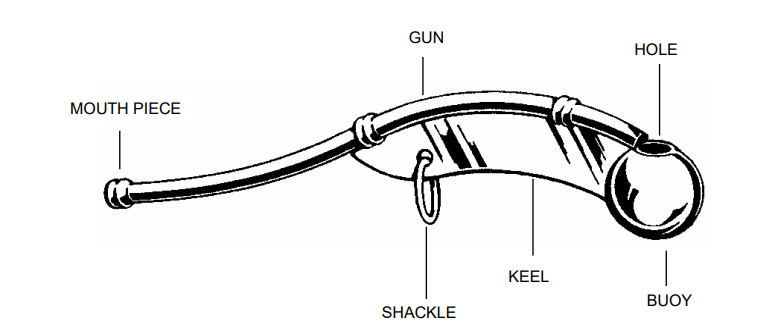
Shapes:
UK — typically curved gun
USA — typically straight gun
France — both curved and straight
Materials:
Silver — antiseptic (germ killing)
Nickel silver — pure or plated brass
Nickel plated brass
Brass
Copper ( poor product )
Gold
Makers:
Because many silversmiths made or even specialized in bosun whistles, there are too many to list and many not identified. Some well-known are:
UK – George Unite, Hilliard and Thomason, Joseph Hudson,
USA – Penn Mint, Nussbaum & Hunold, Gemsco, A&E Co.
France – H. Cosson
China – KWO, Luen Wo, P. King
So next we examine some samplings….
British empire:
- William Bakeman 1802
- Hilliard and Thomason 1886
- Joseph Taylor 1810
- Hilliard and Thomason ( stamped on keel ) 1890
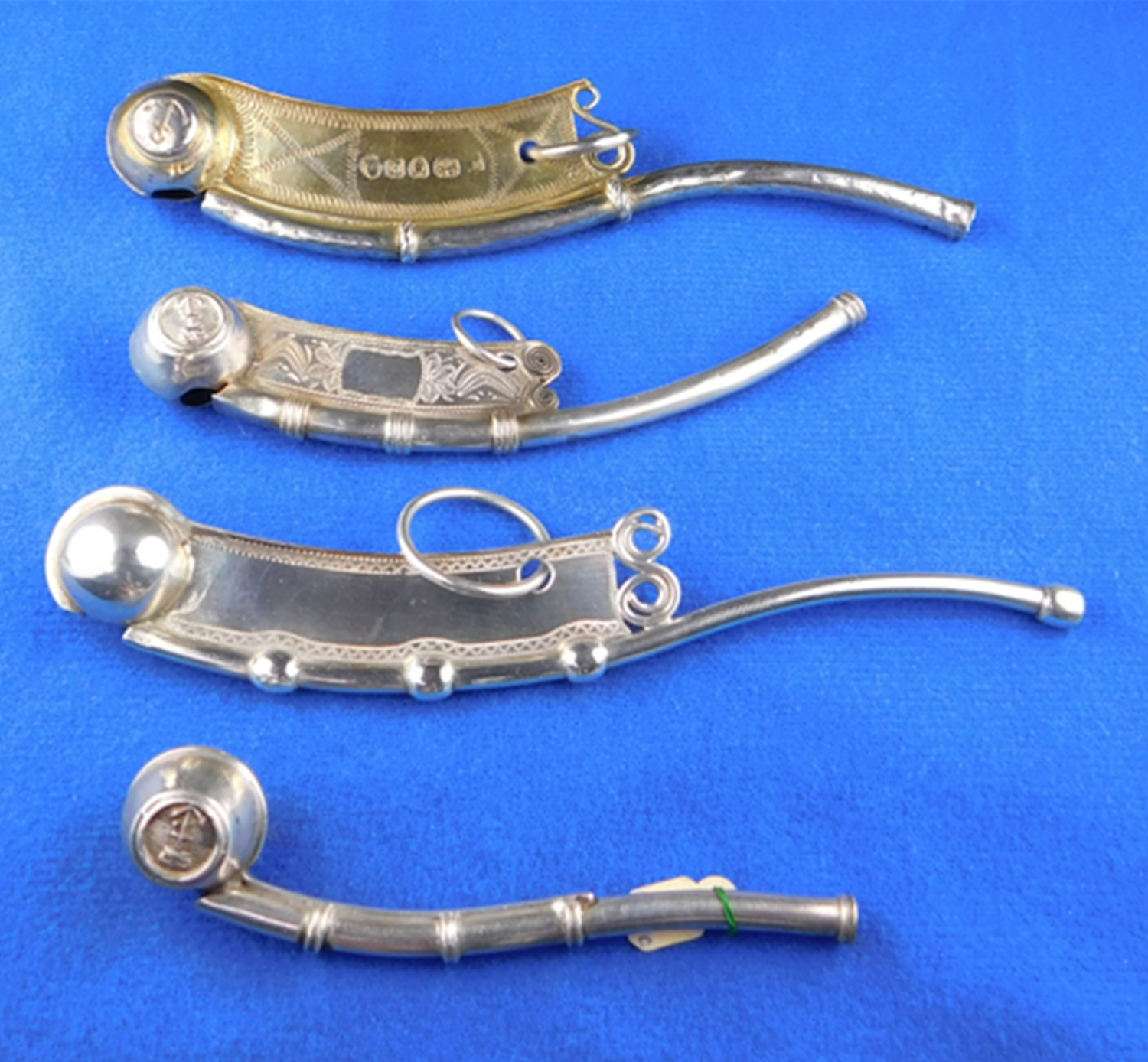
- Un marked ( scalloped keel )
- Vincent Laforme ( Boston, USA ) ‘coin’ silver 1847-1858
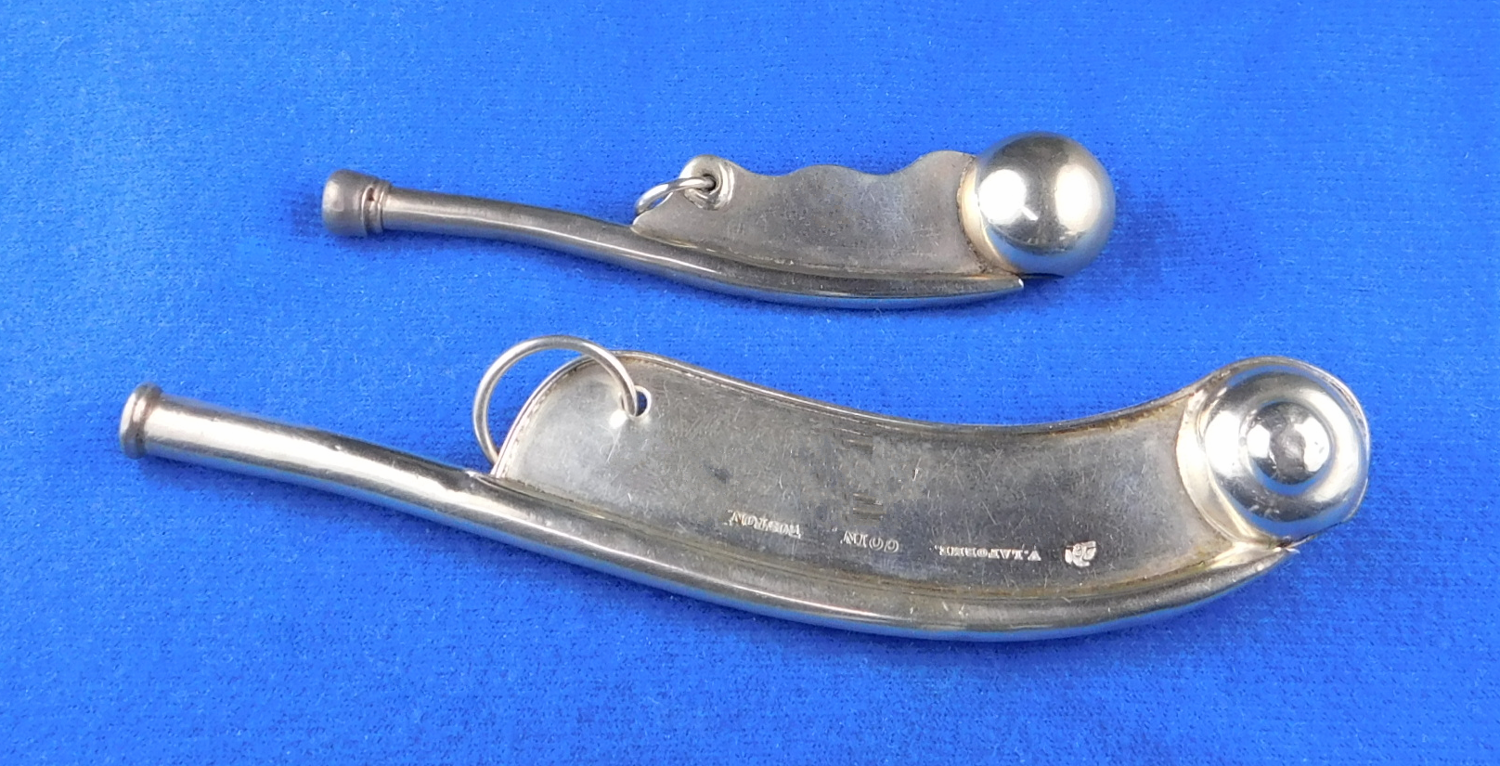
Three patterns:
Joseph Hudson C.1900 round buoy only with this pattern
Joseph Hudson smallest model hallmarked for 1919-barrel buoy with various anchors designs
Joseph Hudson C. 1900 largest model this pattern includes cartouche.
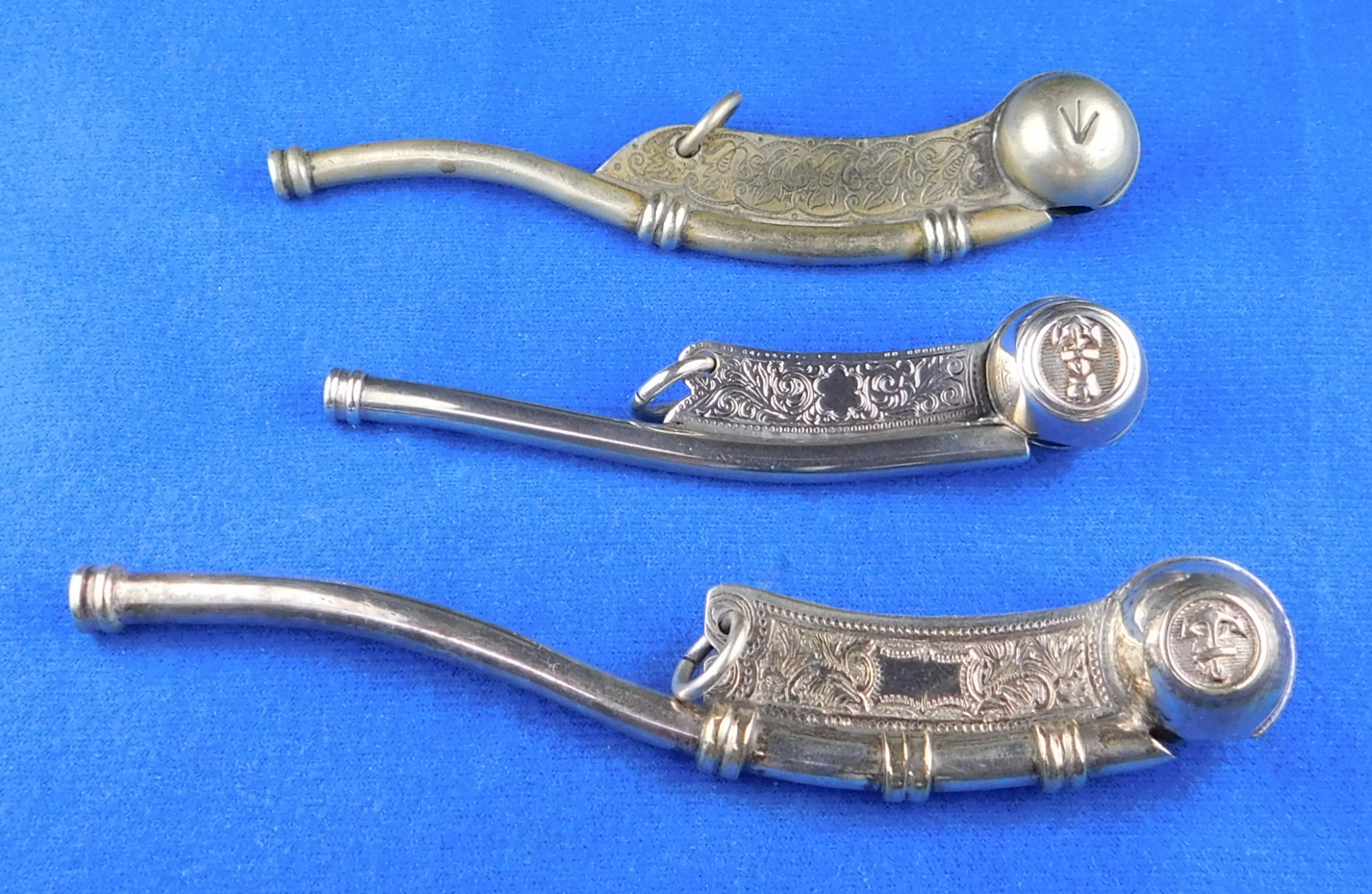
- Alfred DeCourcy patent number on keel C.1905 nickel silver
- Joseph Hudson nickel silver possibly made for Gaunt C. 1900
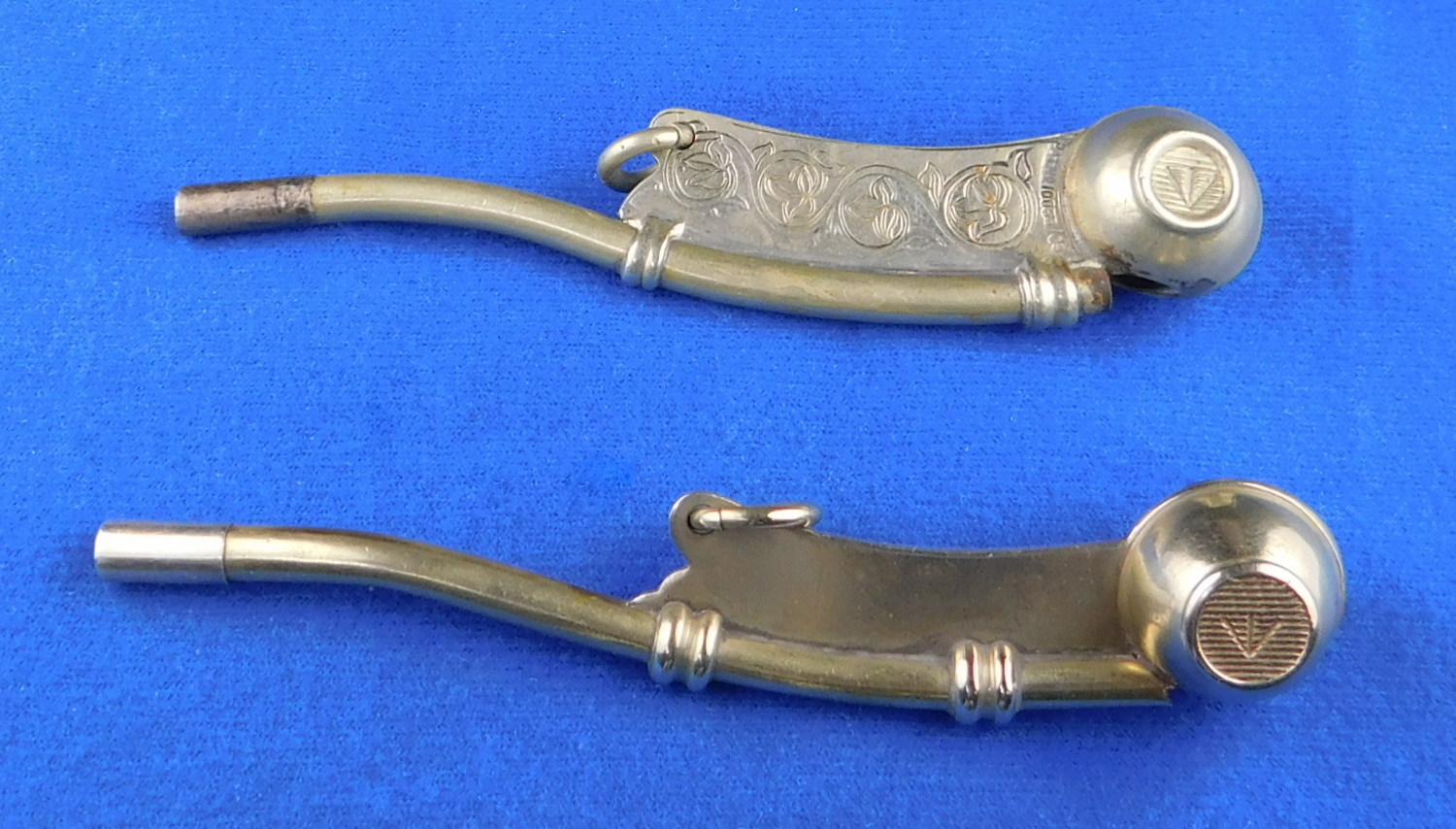
American bodies:
- Engraved keel presentation 1918
- Engraved lettering with attached flag emblem
- Albert Coles 1840
- Engraves full body and buoy naval
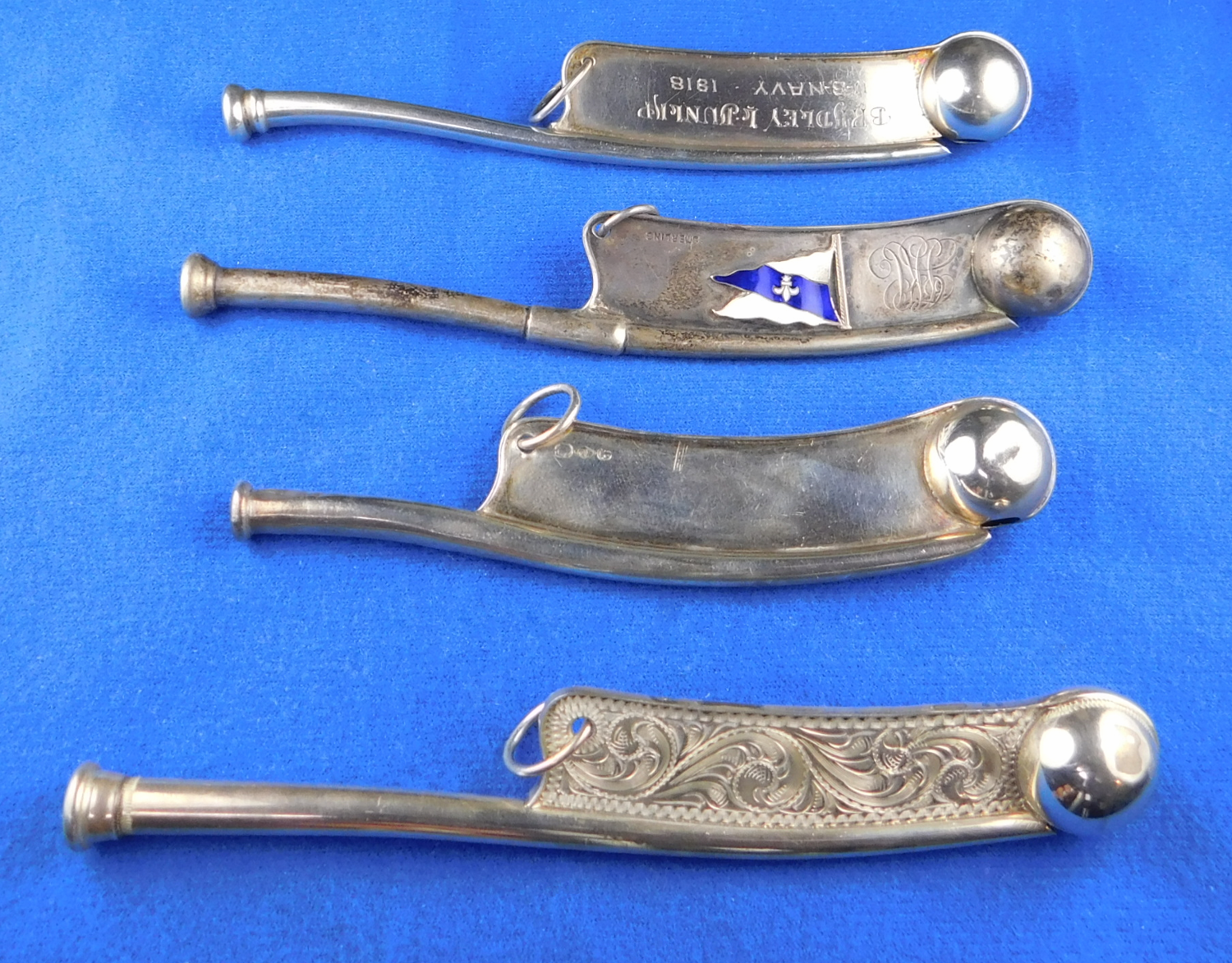
Various countries:
- Dutch Silverhays St, Eloy
- C. 1900 UK/Chinese ‘mini’
- Unknown manufacturer barrel buoy
- Sweden Goteborg 1848
- E. Emanuel patent 767/1896
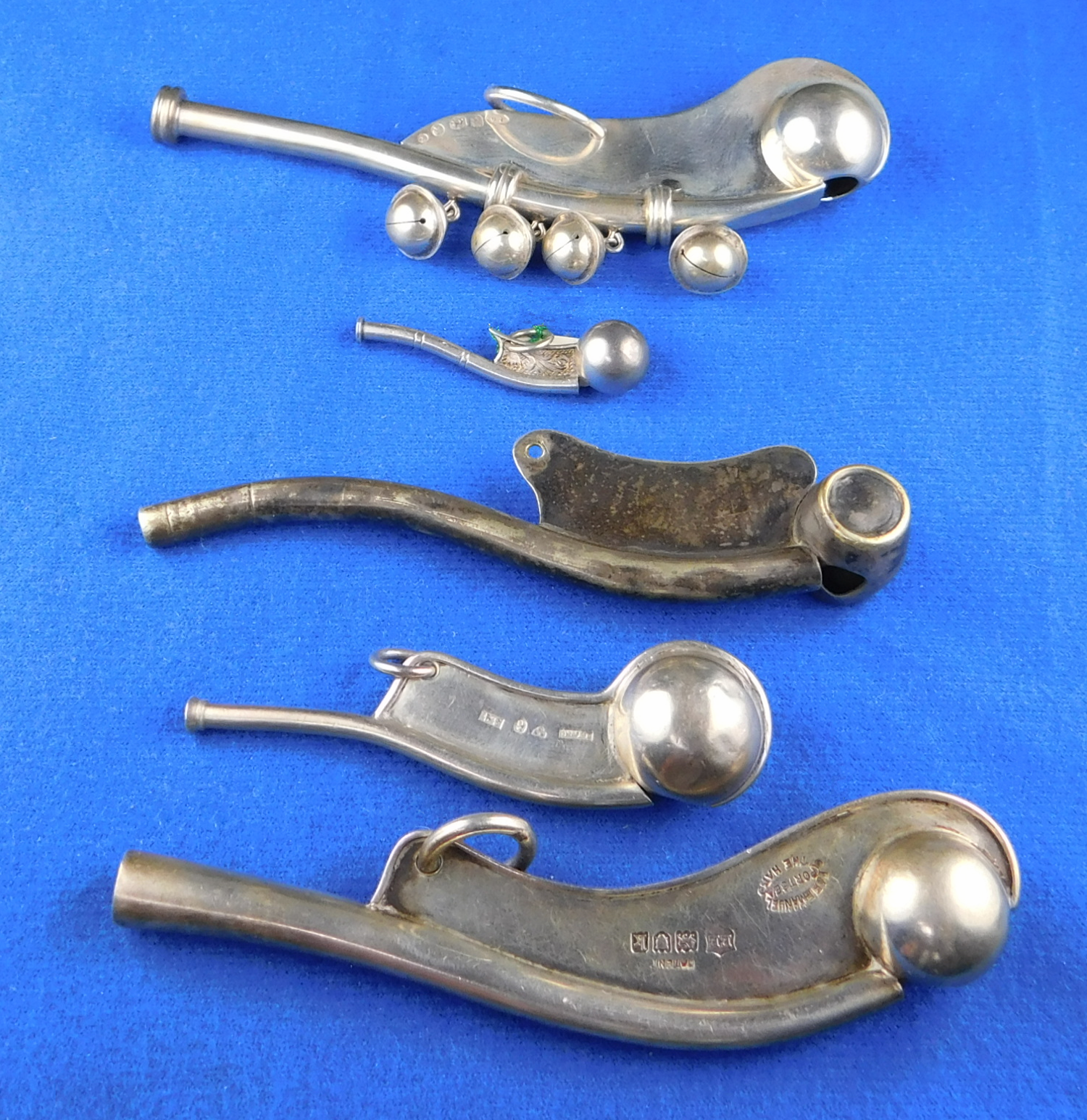
- Japanese C.1910 plain keel
- German C.1940s
- German C. 1910
- Denmark C. 1940
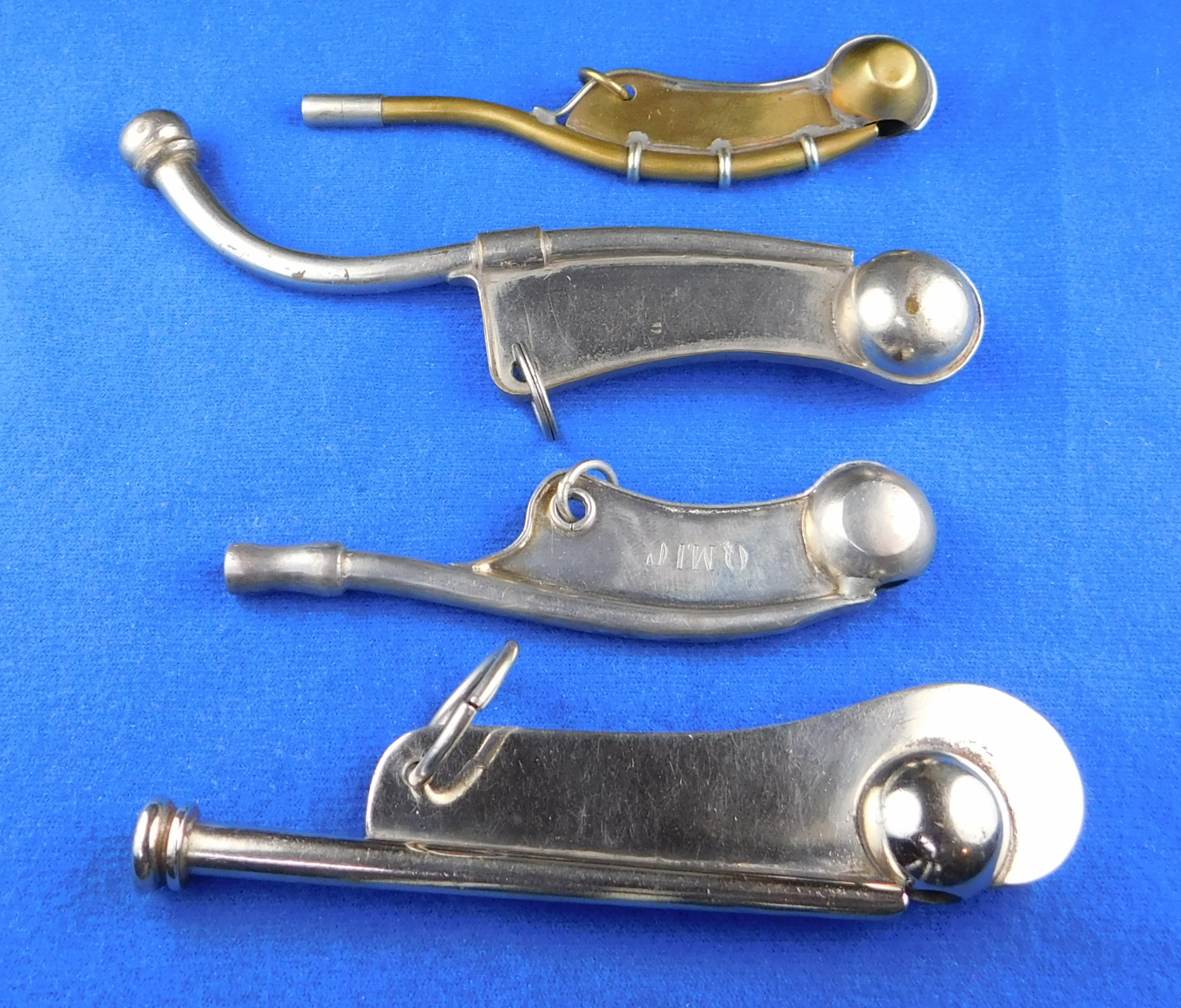
Unknown manufacturer
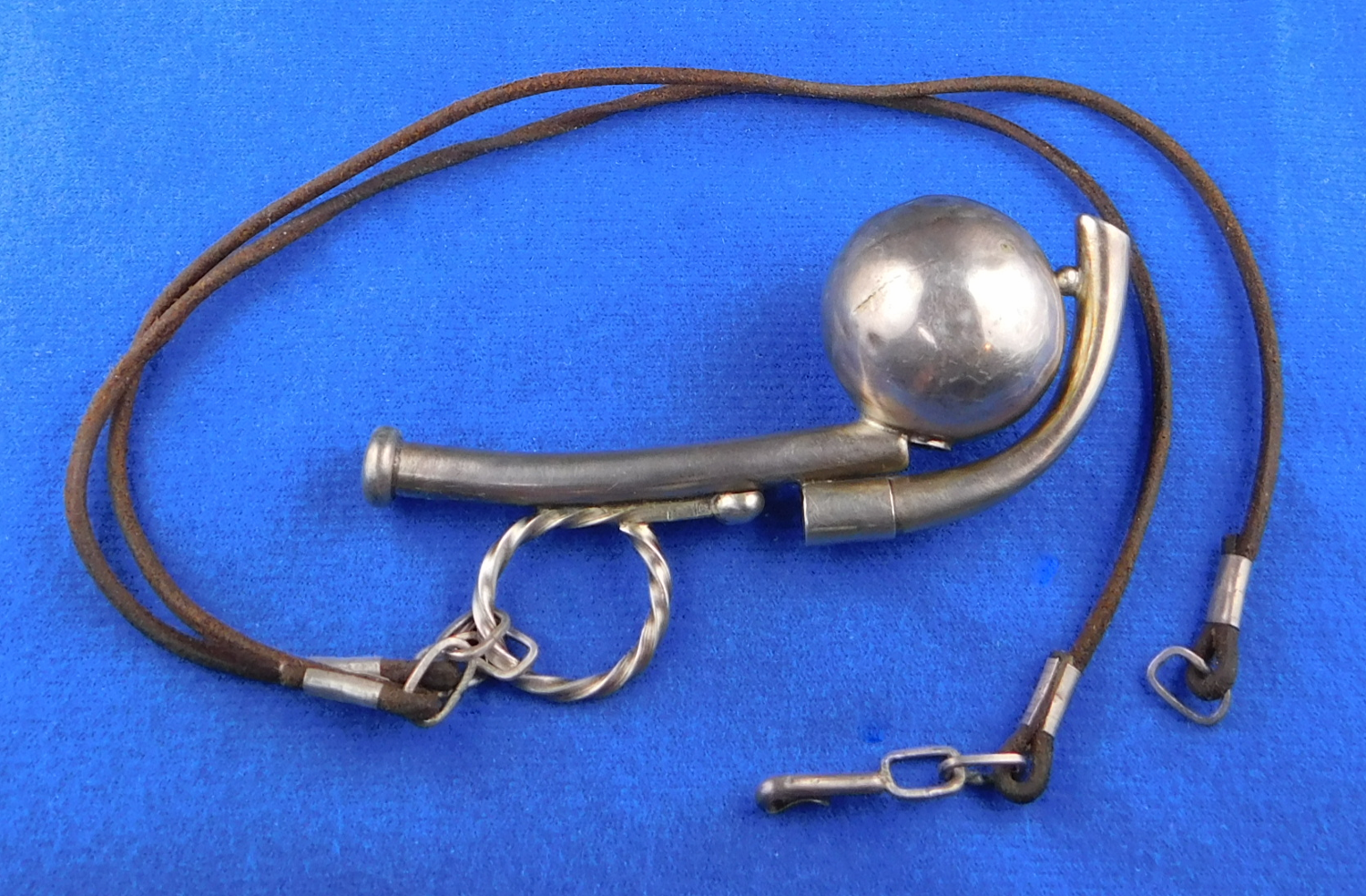
France large 8 inch, 20 inch tri chain, sterling silver
Small skeleton keel, sterling silver
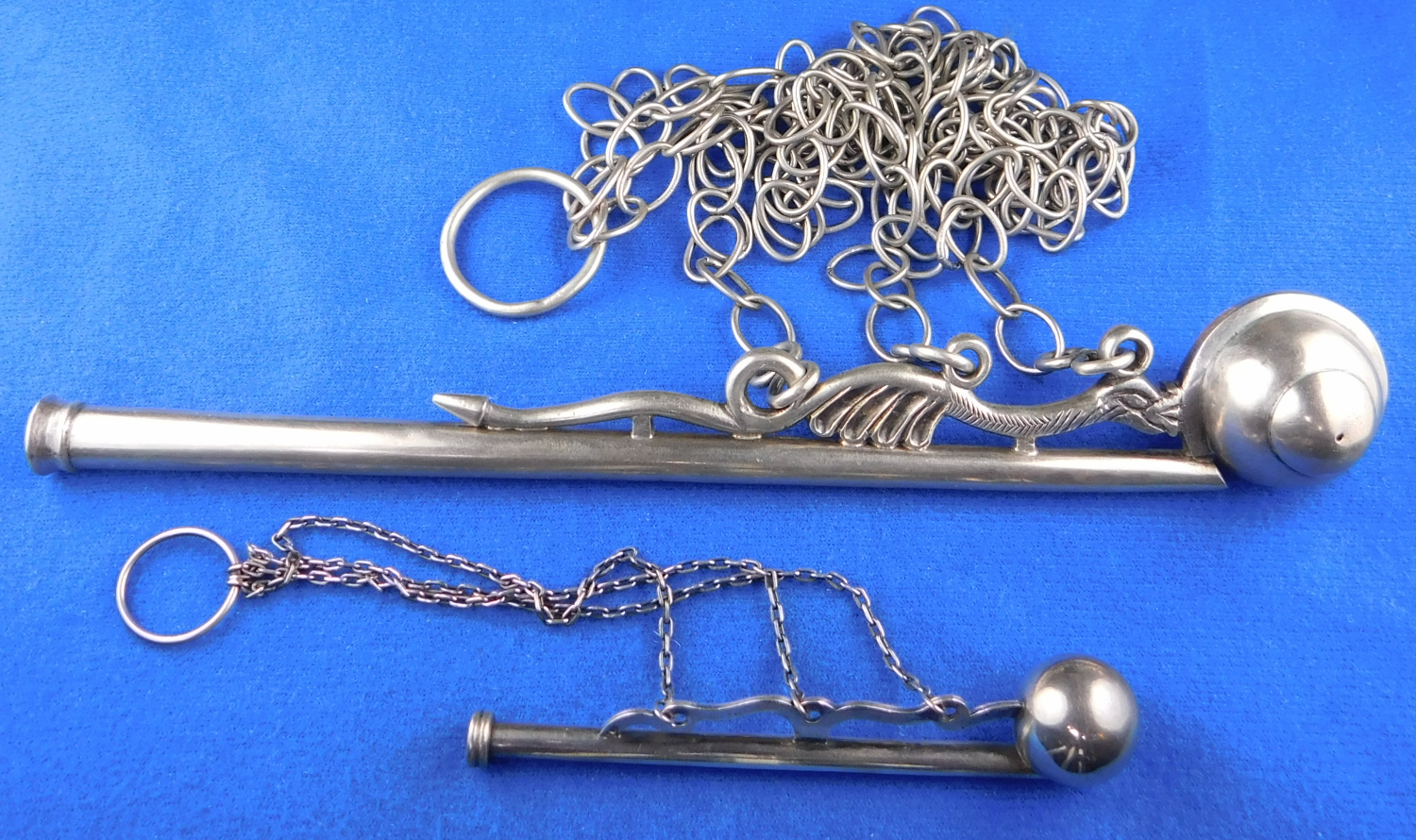
French:
- Baudouin A-Toulon
- Skeleton C. late 1800s
- Wriggle work around keel, silver
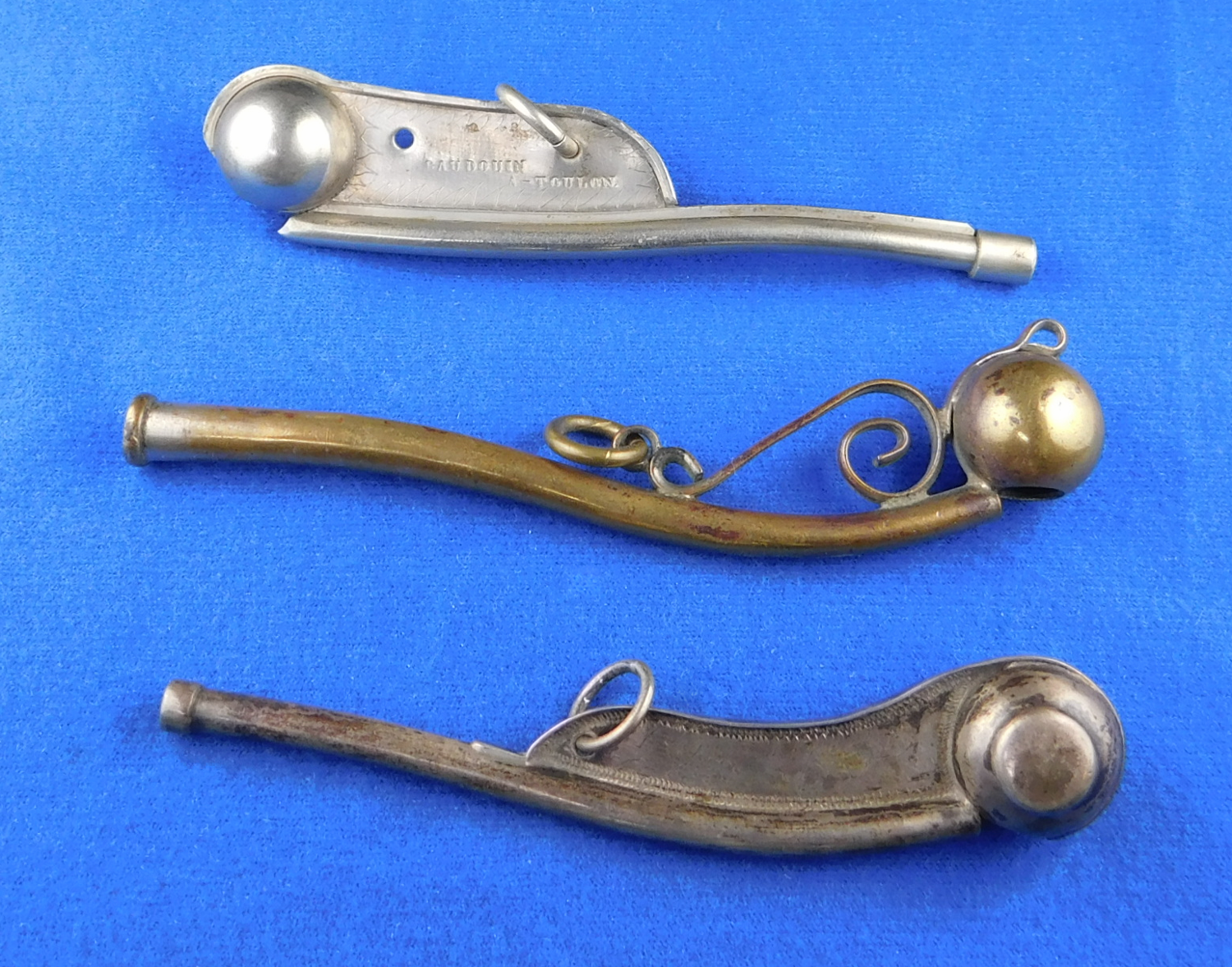
Chinese:
- Wriggle work, multi ribs on gun, stamped anchor buoy, English body
- Skeleton Hong Kong, WKHO C. 1940, American body
- Applied dragon on gun and buoy C. 1940, American body
- Applied dragon on keel and buoy C. 1930, American body
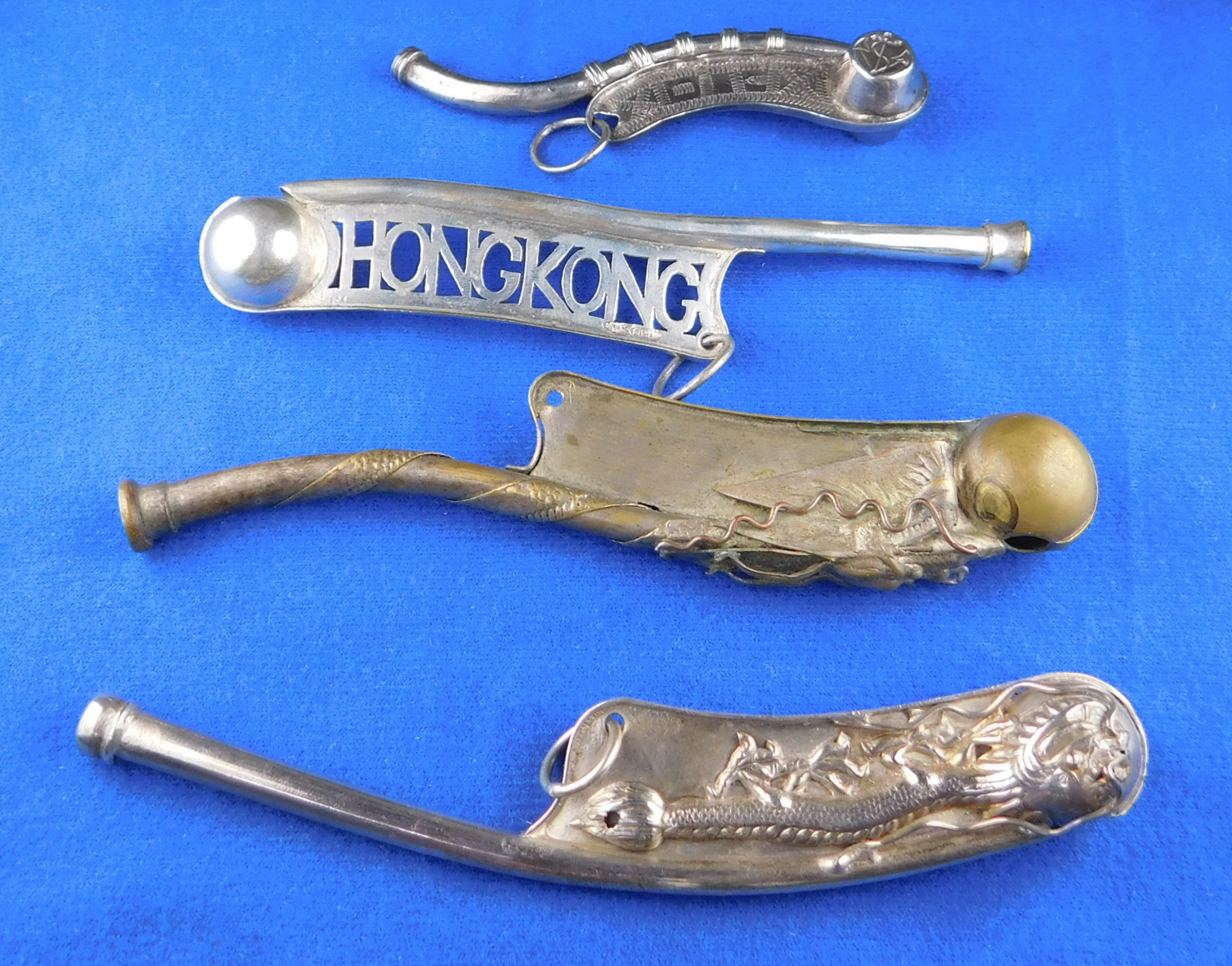
Examples of buoy variety

Examples of American mouthpieces

Conclusions:
Bosun whistles have a long span, tremendous variability and creativity and although shaped like pipes, they remain whistles. Perhaps the largest subgroup, they were made throughout the earth for private, merchant, military and presentation whistles. The keels served well as a platform for all engraving as well as decorations.
TWG
Posted December 5, 2020
Bibliography:
http://www.dundasseacadets.com/uploads/9/8/1/8/9818667/boatswains_20call.pdf
https://www.britannica.com/technology/ship/History-of-ships
